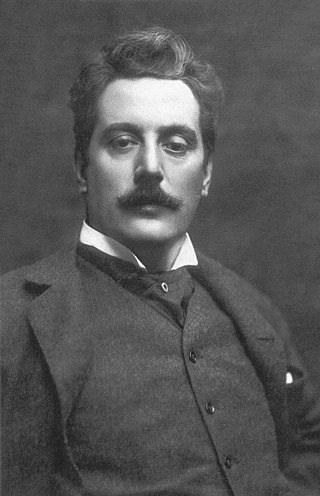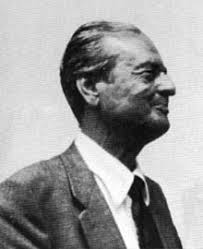Related Research Articles

Giacomo Puccini was an Italian composer known primarily for his operas. Regarded as the greatest and most successful proponent of Italian opera after Verdi, he was descended from a long line of composers, stemming from the late Baroque era. Though his early work was firmly rooted in traditional late-nineteenth-century Romantic Italian opera, it later developed in the realistic verismo style, of which he became one of the leading exponents.
(Gian) Giacomo Carissimi was an Italian composer and music teacher. He is one of the most celebrated masters of the early Baroque or, more accurately, the Roman School of music. Carissimi established the characteristic features of the Latin oratorio and was a prolific composer of masses, motets, and cantatas. He was highly influential in musical developments in northern European countries through his pupils, like Kerll in Germany and Charpentier in France, and the wide dissemination of his music.

Bruno de Finetti was an Italian probabilist statistician and actuary, noted for the "operational subjective" conception of probability. The classic exposition of his distinctive theory is the 1937 "La prévision: ses lois logiques, ses sources subjectives", which discussed probability founded on the coherence of betting odds and the consequences of exchangeability.

Giacomo Meyerbeer was a German opera composer, "the most frequently performed opera composer during the nineteenth century, linking Mozart and Wagner". With his 1831 opera Robert le diable and its successors, he gave the genre of grand opera 'decisive character'. Meyerbeer's grand opera style was achieved by his merging of German orchestra style with Italian vocal tradition. These were employed in the context of sensational and melodramatic libretti created by Eugène Scribe and were enhanced by the up-to-date theatre technology of the Paris Opéra. They set a standard that helped to maintain Paris as the opera capital of the nineteenth century.

L'Africaine is an 1865 French grand opéra in five acts with music by Giacomo Meyerbeer and a libretto by Eugène Scribe. Meyerbeer and Scribe began working on the opera in 1837, using the title L'Africaine, but around 1852 changed the plot to portray fictitious events in the life of the Portuguese explorer Vasco da Gama and introduced the working title Vasco de Gama, the French version of his name. The copying of the full score was completed the day before Meyerbeer died in 1864.
The year 1621 in music involved some significant events.
The year 1614 in music involved some significant musical events.
The year 1613 in music involved some significant events.
The year 1612 in music involved some significant events.
The year 1611 in music involved some significant events.
The year 1605 in music involved some significant events.

Santa Maria in Via is a church in Rome. The church or a chapel existed in the 9th century, but was rebuilt following reports of a miracle. In 1165, it is recorded as Santa Maria in Via, whose appellative means "on the Way", with a reference to the nearby Via Flaminia.
The year 1609 in music involved some significant events.

The year 1622 in music involved some significant events.
Giovanni Battista Riccio was a musician and composer of the early Baroque era, resident in Venice, most notable for his development of instrumental forms, particularly utilizing the recorder.

Mario Theodoli was an Italian Catholic Cardinal.
Ghirlanda sacra scielta da diversi eccellentissimi compositori de varii motetti à voce sola is a compilation of 44 single-voice motets in the new style assembled by Leonardo Simonetti. Simonetti was a chorister in the Cappella Marciana, and placed his master Claudio Monteverdi at the head of the collection with four pieces, following it with other composers from the area of Venice and Veneto. A second printing followed in 1636.
Sebastiano Pisani was a Roman Catholic prelate who was Bishop of Verona (1668–1690).

Federico De Franchi Toso was the 96th Doge of the Republic of Genoa.
References
- ↑ Eleanor Selfridge-Field Venetian Instrumental Music from Gabrieli to Vivaldi – 1994, page 29 "One of the most respected maestri seems to have been the Anconitan priest Giacomo Finetti, appointed in 1613. Finetti died in the plague of 1630 and was succeeded by a monk named Carlo [da] Pesaro, who was paid a salary of ninety .."